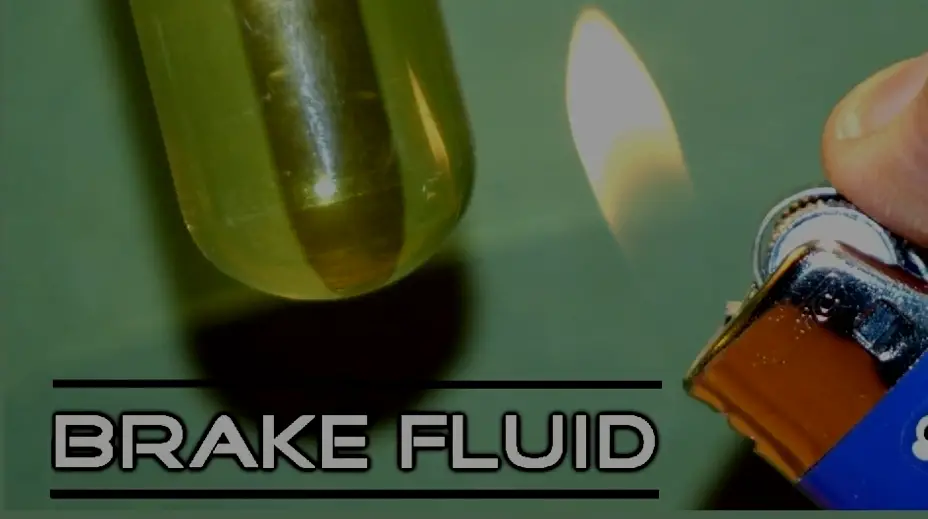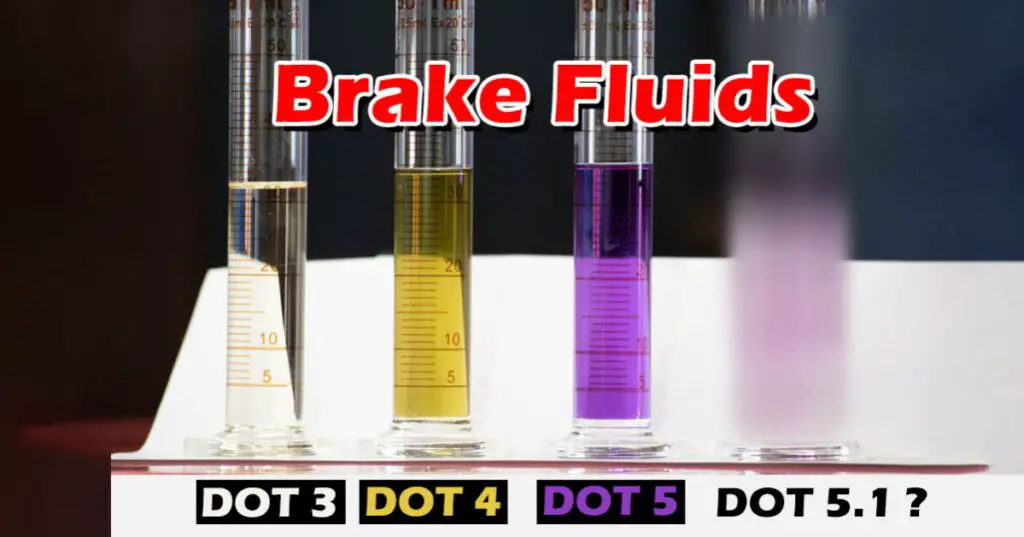Yes, brake fluid can burn as it is a combustible substance with a flash point between 210°C and 275°C (410°F to 527°F). It requires sustained heat or an open flame to ignite and can contribute to vehicle fires if it leaks onto hot components.
Brake fluid is a vital component of a vehicle’s braking system, ensuring the efficient transfer of force from the brake pedal to the wheels. However, beyond its functional role, brake fluid’s chemical properties raise important safety concerns, particularly regarding its flammability and the potential to burn. Knowing whether brake fluid burns and the conditions under which it may ignite is crucial for automotive safety, maintenance, and emergency response.
This blog post will explore the science behind brake fluid’s flammability, its behavior under heat, and the safety precautions you should take. We’ll also address common questions about brake fluid’s interaction with fire and its role in vehicle safety.

Contents
What Is Brake Fluid?
Brake fluid is a hydraulic fluid that transmits force through the braking system. It must operate effectively under extreme pressure and temperature conditions without boiling or freezing. There are various types of brake fluid, classified by their composition and performance standards, including:
- DOT 3: Glycol-based, common in most vehicles.
- DOT 4: Similar to DOT 3 but with higher boiling points.
- DOT 5: Silicone-based, used in specialized applications.
- DOT 5.1: A glycol-based alternative with enhanced performance for high-temperature applications.

Does Brake Fluid Burn?
Yes, brake fluid can burn under specific conditions. While brake fluid is not highly flammable under normal circumstances, it is combustible and can ignite when exposed to sufficiently high temperatures or open flames. Here’s a breakdown of how and why brake fluid burns:
Flammability of Brake Fluid
Yes, brake fluid can burn under the right conditions. Most brake fluids are classified as combustible rather than flammable, meaning they do not ignite as easily as flammable liquids like gasoline but can still burn when exposed to high temperatures.
- Flash Point: The flash point of brake fluid—the temperature at which it emits enough vapor to ignite—is typically between 210°C and 275°C (410°F to 527°F). This makes it less likely to ignite than gasoline but still capable of burning in certain circumstances.
- Ignition Source: Brake fluid requires a sustained ignition source, such as an open flame or a hot surface, to catch fire. It does not spontaneously combust under normal conditions.
- Chemical Composition: Glycol-based fluids contain organic compounds that are combustible, while silicone-based fluids are less prone to burning but not entirely fireproof.
How Brake Fluid Burns
Brake fluid burns with a clean, hot flame, producing heat and minimal visible smoke. Its combustion process can escalate rapidly if it comes into contact with other flammable materials. For example:
- In Engine Compartments: Brake fluid leaking onto hot engine components, such as exhaust manifolds, can ignite and cause a fire.
- During Overheating: If the brake system overheats, the brake fluid can reach its flash point, especially in cases of prolonged braking or system failure.
- In Accidents: Vehicle collisions can lead to brake fluid leaks, increasing the risk of fire when combined with heat or sparks.
Safety Concerns Related to Brake Fluid Combustion
Brake fluid combustion is a rare but critical safety concern due to the unique properties of brake fluid and its role in the braking system. Understanding the risks and addressing preventive measures are essential for safety. Here’s a detailed overview of the safety concerns related to brake fluid combustion:
- Vehicle Fires: Leaking brake fluid is a known contributor to vehicle fires. When brake lines fail, fluid can spray onto hot surfaces, creating an ignition hazard.
- Toxic Fumes: Burning brake fluid produces toxic fumes, including carbon monoxide and other harmful gases, posing health risks to those nearby.
- Environmental Impact: Brake fluid spills, when ignited, can release pollutants into the environment, further emphasizing the need for careful handling and disposal.
Preventing Brake Fluid-Related Fires
Preventing brake fluid-related fires requires understanding the conditions under which brake fluid can ignite and implementing proper safety practices. Here are the most effective strategies:
- Regular Maintenance: Inspect brake lines, hoses, and seals for leaks or damage during routine maintenance. Replace worn components promptly.
- Avoid Overheating: Use the appropriate brake fluid for your vehicle and driving conditions to prevent overheating. High-performance fluids, such as DOT 4 or DOT 5.1, are better suited for heavy-duty or high-temperature applications.
- Proper Storage: Store brake fluid in a cool, dry place away from heat sources and open flames. Keep containers tightly sealed to prevent vapor release.
- Dispose Safely: Dispose of used or contaminated brake fluid according to local regulations. Avoid pouring it down drains or into the environment.
- Emergency Response: In case of a brake fluid fire, use a Class B fire extinguisher, as water may spread the fire due to the fluid’s chemical composition.
Comparing Brake Fluid to Other Automotive Fluids
Comparing brake fluid to other automotive fluids highlights its unique properties and roles, especially concerning its flammability, viscosity, and operational characteristics. Here’s a detailed comparison:
| Fluid | Flammability | Flash Point | Ignition Conditions |
|---|---|---|---|
| Brake Fluid | Combustible | 210–275°C (410–527°F) | Requires sustained heat or flame. |
| Gasoline | Highly flammable | -40°C (-40°F) | Ignites easily at low temperatures. |
| Motor Oil | Combustible | 200–230°C (392–446°F) | Burns when exposed to high heat. |
| Coolant | Generally non-flammable | ~120°C (248°F) | Not prone to ignition. |
Brake fluid is less flammable than gasoline but more combustible than coolant, requiring specific conditions to ignite.
Frequently Asked Questions
Here are some FAQs about brake fluid and burning –
1. Can brake fluid start a fire?
Yes, brake fluid can start a fire if it leaks onto a hot surface or is exposed to an open flame. It is combustible and burns when it reaches its flash point.
2. Is brake fluid considered flammable?
Brake fluid is classified as combustible rather than flammable, as it requires higher temperatures to ignite compared to flammable substances like gasoline.
3. What should I do if brake fluid catches fire?
Use a Class B fire extinguisher to douse the flames. Avoid using water, as it may spread the fire due to the fluid’s chemical properties.
4. Can old brake fluid burn more easily?
Old or contaminated brake fluid may have altered chemical properties that could lower its flash point, making it more prone to ignition under extreme conditions.
5. How can I safely store brake fluid to prevent fires?
Store brake fluid in a sealed container, away from heat sources, sparks, or open flames, and in a cool, well-ventilated area.
Conclusion
While brake fluid is not as easily flammable as gasoline, it is still combustible and can burn under specific conditions. Its role in vehicle fires underscores the importance of regular maintenance, proper handling, and storage. Knowledge about the flammability of brake fluid and taking preventive measures ensures the safety of both your vehicle and the surrounding environment.